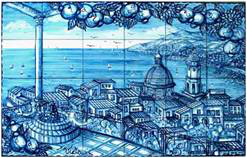Speaker
Mr
GABRIELE BABINI
(University of Pavia, Physics Department - INFN, Section of Pavia)
Description
Background:
NF-κB transcription factors are critical regulators of immunity, stress responses, apoptosis and differentiation. A variety of stimuli coalesce on NF-κB activation. NF-κB-dependent transcription is not only tightly controlled by positive and negative regulatory mechanisms but also closely coordinated with other signaling pathways [1].
Indeed, the NF-kB pathway is activated in response to a wide range of physical and chemical stress stimuli (e.g. ionizing radiation, signaling proteins) and lead to an up- or down-regulation of several molecules, amongst which its own inhibitor.
Purpose:
Investigate the temporal dynamics of activation of NF-kB and its pathway-related molecules and look at correlations, if any, with external stimuli such as different doses of gamma rays exposure and/or medium change.
Experimental setup and Methods:
Human skin fibroblasts AG01522 were grown until confluence. Then the culture medium was replaced with new one and after 45 minutes the flasks were exposed to different doses of gamma rays (up to 5 Gy) from a 60-Co source. ELISA Assays were performed to evaluate the amount of NF-kB in the nuclear extracts while other related proteins (e.g. Akt, Erk 1/2) were investigated in the cytoplasmic samples, through Western Blot and ELISA Assay. Interleukins (e.g. IL-6, IL-8) released into the medium were investigated as well, through the previously described techniques.
Results:
Temporal dynamic studies performed for NF-kB investigation show a fast activation of this transcription factor after culture medium change. This environmental stimulus greatly perturbs this pathway that reaches again the homeostatic equilibrium several hours later. The comparison between sham-irradiated and irradiated cells did not show any statistically relevant additional perturbation to the “in vitro” system, already perturbed by the medium change. Investigations of the other molecules related to this pathway show a perturbation of their expressions with timings comparable to the one of NF-kB.
Conclusion:
The effects of ionizing radiation exposure on the activation of NF-kB, subsequent to the change of medium in confluent cell cultures, appear to be negligible, or even absent, up to 5 Gy of gamma rays.
[1] Oeckinghaus A. et al., Nature Immunol, 12(8):695-708, (2011)
This work was partially supported by the European Commission (EC Contract FP7 EURATOM project “EPIRADBIO” and “DOREMI”).
Author
Mr
GABRIELE BABINI
(University of Pavia, Physics Department - INFN, Section of Pavia)
Co-authors
Prof.
ANDREA OTTOLENGHI
(University of Pavia, Physics Department - INFN, Section of Pavia)
Dr
DANIELE ALLONI
(University of Pavia, Physics Dept. - INFN, Sezione of Pavia - LABORATORIO ENERGIA NUCLEARE APPLICATA Pavia)
Dr
DONATA CAPPELLETTI
(University of Pavia, Physics Department - INFN, Section of Pavia)
Mr
JACOPO MORINI
(University of Pavia, Physics Department and Department of Molecular Medicine- INFN, Section of Pavia)
Dr
LUCA MARIOTTI
(University of Pavia, Physics Department - INFN, Section of Pavia)

